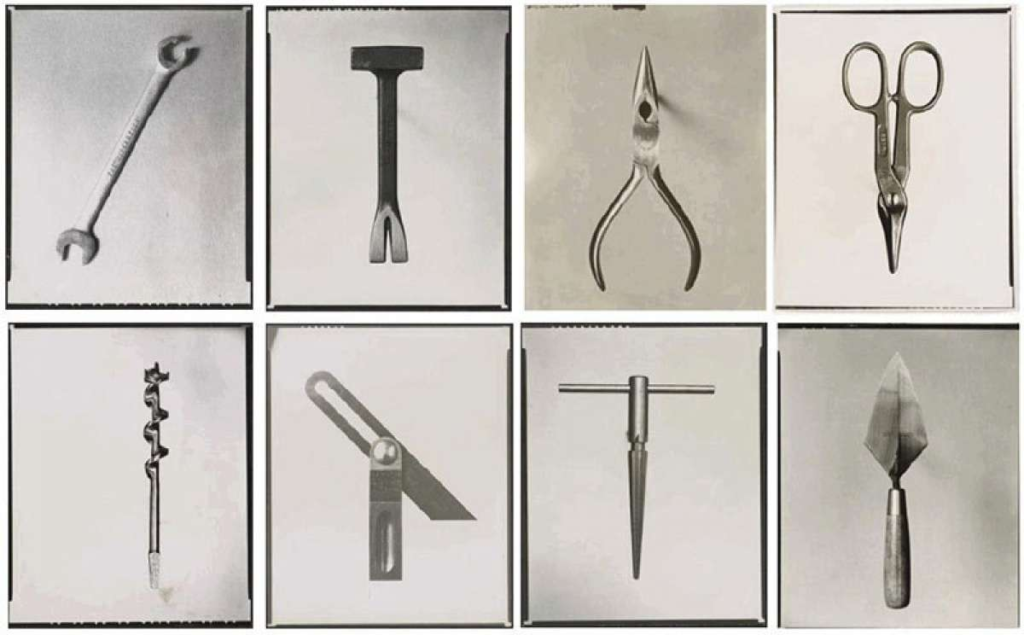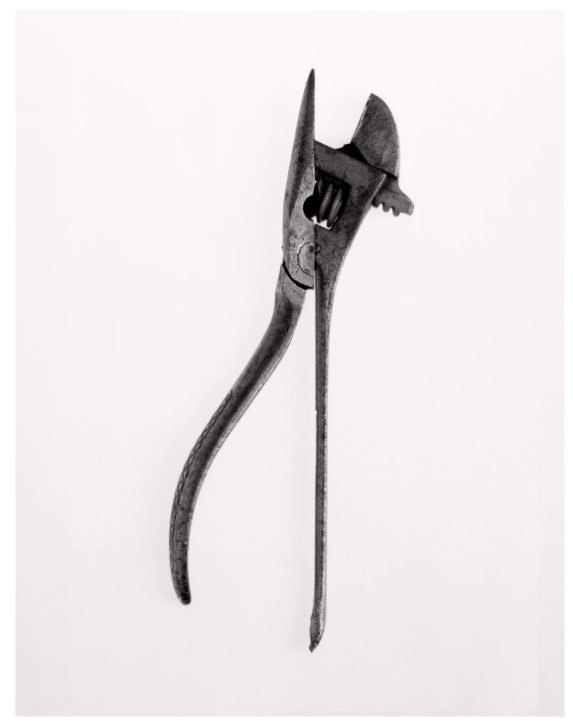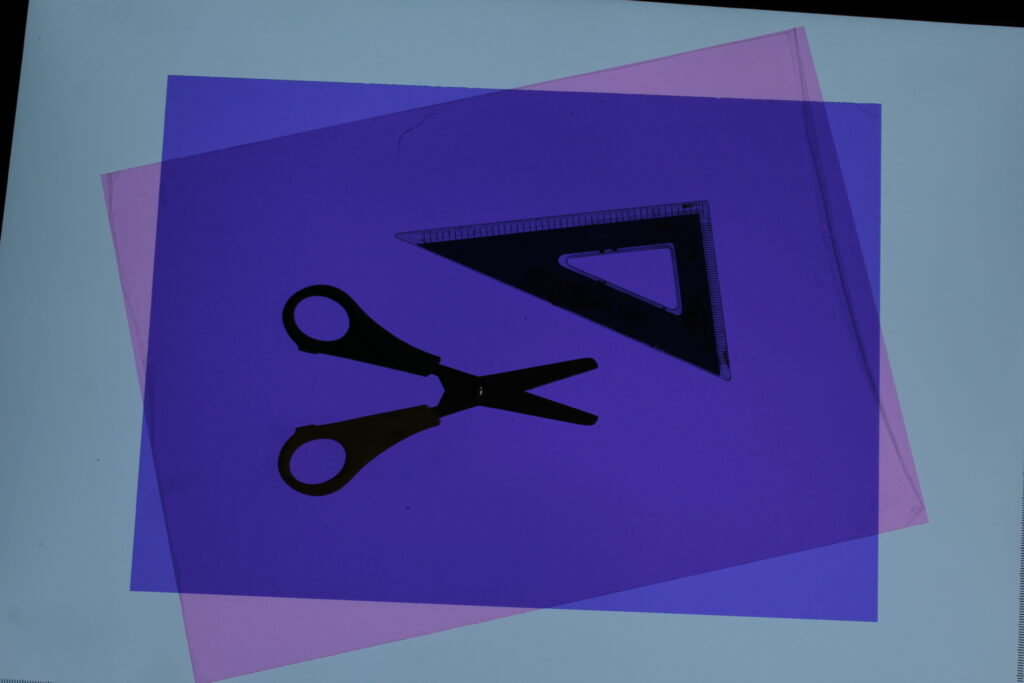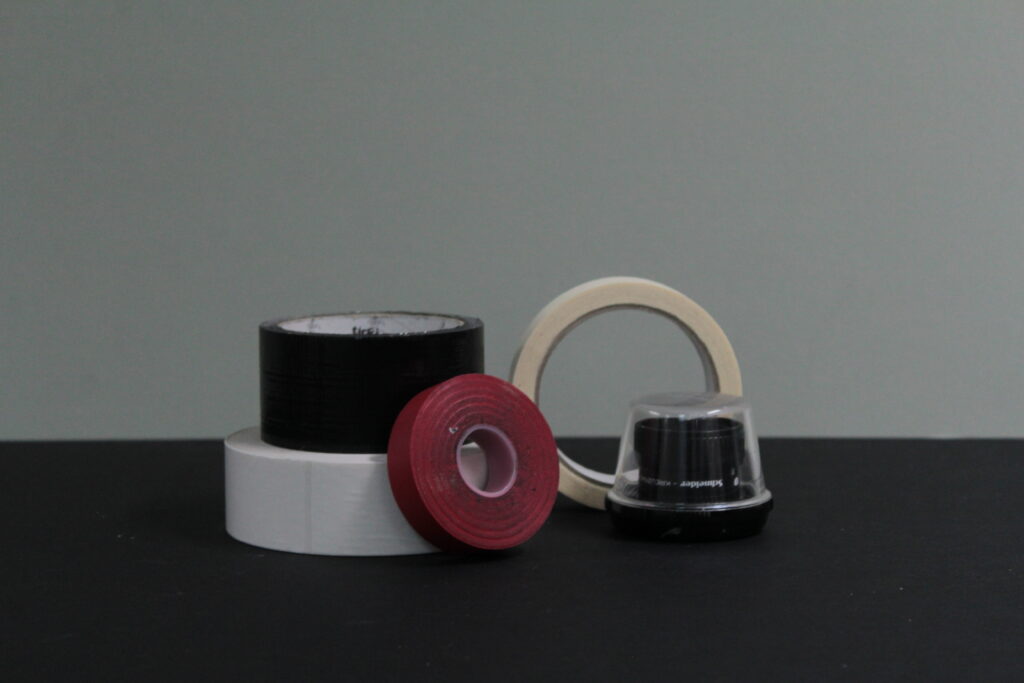
Darren Harvey- Regan, blurring the boundaries between photography and sculpture, Exeter-born his work challenges us to scrutinise the divide between an object and its representation. His portraits of welded mismatched industrial tools appear pristine and polished, captured on a film like a collection of precious and revered objects.
Darren Harvey-Regan is a contemporary British artist and photographer known for his work that often explores themes of identity, memory, and the passage of time. He utilizes still life photography and mixed media to create evocative compositions that challenge viewers’ perceptions of reality and the ordinary. His practice often incorporates personal narratives and reflections on memory, using objects and settings to evoke emotions and provoke thought. Harvey-Regan’s work has been exhibited in various galleries and is recognized for its artistic depth and conceptual rigor.
Darren Harvey-Regan’s images often symbolize themes of identity, memory, and the transient nature of life. His use of still life and mixed media allows him to create layered narratives that invite viewers to reflect on personal and collective experiences. Objects in his compositions frequently carry symbolic meaning, representing emotions, memories, or the passage of time.
Through careful arrangement and lighting, his work explores the fragility of existence and the complexities of human perception, prompting contemplation about how we relate to the world around us. Overall, his images serve as a poignant commentary on the interplay between memory, identity, and the objects that populate our lives.

A key difference between their works would be that Walker Evans tools are simple, lighting is placed to make them just simple shapes and lines rather than abstract art whereas Darren Harvey-Reagans work differs due to his welding two different tools together leaving the mind to question what the meaning of his work is.
Walker Evans was an influential American photographer known for his documentary style and ability to capture the essence of American life. Born in 1903, he gained prominence during the Great Depression when he worked for the Farm Security Administration (FSA). His most famous work, “Let Us Now Praise Famous Men,” features striking portraits and images of impoverished families in the South, revealing the harsh realities of their lives.
Evans was known for his meticulous attention to detail and composition, often using large-format cameras to create images that conveyed both beauty and social commentary. His work extended beyond documentary photography, influencing the fields of art and visual culture. Evans’s legacy continues to resonate, as he is celebrated for his profound ability to document everyday life and the American experience through a humanistic lens.
Walker Evans’s images symbolize the complexity of American life, particularly during the Great Depression. His work captures the struggles and resilience of individuals, emphasizing themes of poverty, identity, and the human experience. Through his meticulous compositions, Evans highlights the dignity and humanity of his subjects, often portraying their environments in ways that reflect broader social and economic conditions.
His photographs serve as powerful social commentary, inviting viewers to confront the realities of hardship while also celebrating the beauty in everyday moments. The use of straightforward, unembellished imagery in his work symbolizes authenticity and truth, making his photographs not just historical documents but also poignant reflections on the human condition. Overall, Evans’s images evoke empathy and provoke thought about social issues, identity, and the passage of time in American society.
My photos:

This would definitely be my own personal take on the photo due to the colour contrast, neither Darren or Walker Evans used colours like this within there work so this would be my own personal take on the ides. This image is a spin on there work, I have still utilized the ides of normal everyday tools but just used a different background so that people can see them within a new light.

This photographer has a very clear white background, making the simplicity of the tool stand out, leaving nothing else to the eye apart from this singular paintbrush. This photo does look a little bit more like there work but I would personally say still has my spin on the ides of there photographs.

Although this is nothing like a hammer or a pair of scissors I would say this looks like most like there work, the ideas of stacking the tape upon each other leaves more to the image but still only really has one simple image.
